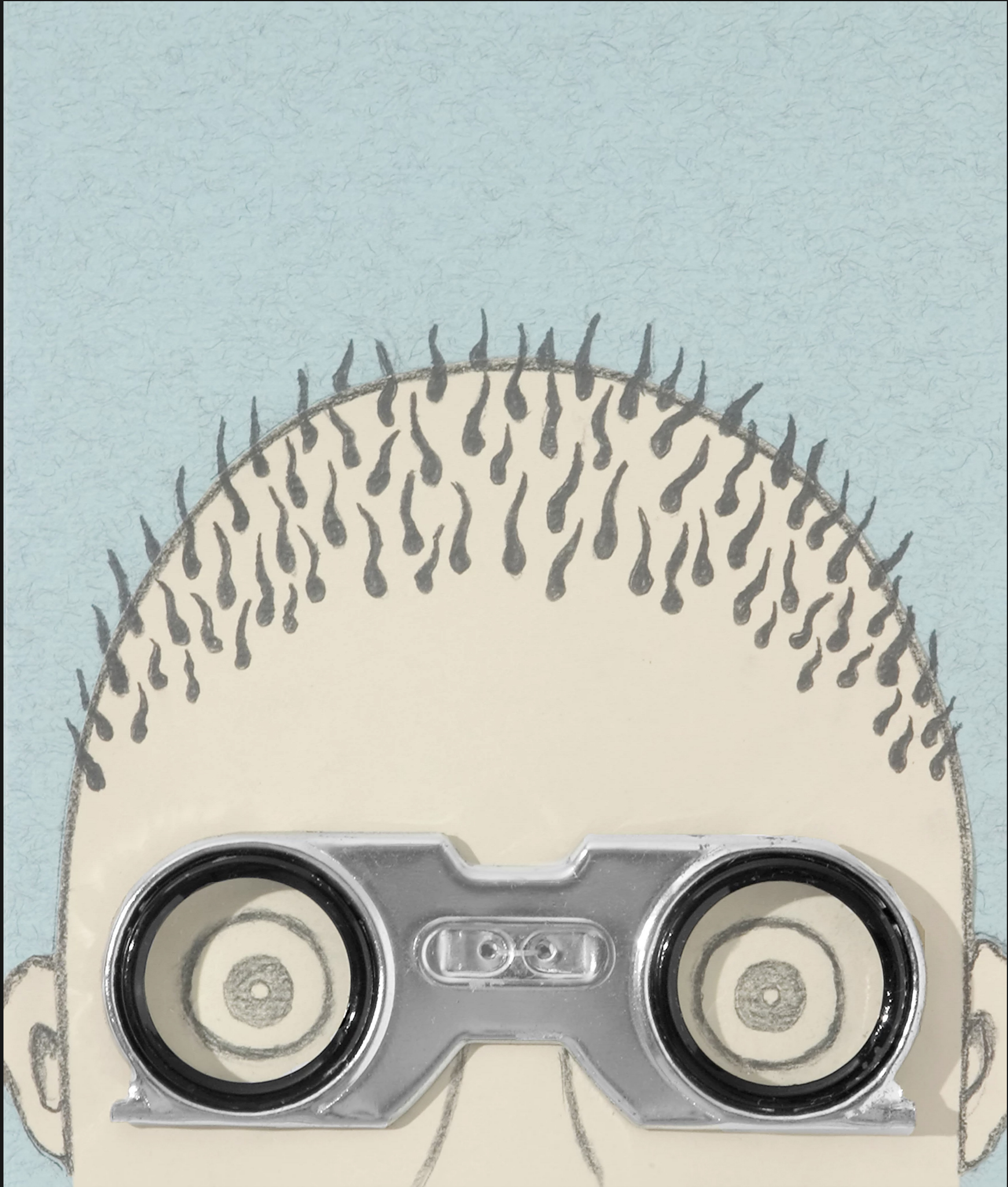Disorderly Construct Breaks the Law
Artists Off Script at the Arts Fund Gallery

The title of this group show, Disorderly Construct, puns on the idea that the work on display breaks the law, even if by “the law” we just mean the expectation that each of the eight artists involved will employ their usual “lawful” media and process. What’s exciting about the criminal connotation of “disorderly” is how far some are willing to go to achieve what the invite describes as an “unexpected edge.” For curator/participant Giuliana Mottin, who organized the show along with Hugh Margerum, the urge toward disorder results in something of a paradox, as her contribution, a painting called “In My Womb” from 2017, abandons the paint-drop drip technique of her “Daily Candy” series in favor of complex and elegantly crafted hard-edged abstraction in the manner of Frederick Hammersley and Stuart Davis.
There’s paradox at work, as well, in the way that Hank Pitcher’s interest in classic Attic Greek and Roman ceramics led him to create small tiles and deck them with simplified black and white images, details drawn from his familiar and large-scale full color paintings. Pitcher’s ceramic surfers, beach dogs, palm trees, and birds may have been inspired by ancient Greece, but from another angle they appear to have sprung from the punks of Venice Beach. Of course this is far from Pitcher’s first foray in a Dogtown-adjacent direction — e.g., the high-contrast black-and-white label he designed for Mr. Zog’s Sex Wax.
Inscrutable ink portraits of author John Fowles spread across the Arts Fund’s Gail Berkus wall in Karl Petrunak’s Daniel Martin project. Stuck without a studio to work in, the artist took a discarded copy of Fowles’s novel and drew his face over and over on its pages from memory. Like a book read on a strange journey, the work is somehow at once eerie and comforting. Across the space and around the door, Linda Daniels has pinned hand-cut colored film to a wall drawing in a sidelong, Lewitt-flavored homage to Matisse. George Sanders commands the new-media niche to the right of the entrance with an elegant projection describing plans he once made for works that don’t exist. The words flash on the gallery wall in white letters, the font growing and shrinking like some lunatic optician’s chart.
While all the artists in the show reveal something sharp about their practice, Richard Ross applies the most pressure to his edge. He attributes the images on view to his father, an amateur photographer and admirer of the unclothed female form. Nearby, Nancy Gifford alludes to another set of “Crazy Times” with a large rear-view portrait of a faceless male, his back crisscrossed with the straps of a straitjacket and his bristly hair a dense and tactile forest of graphite strokes. It’s unsettling, and adds a dimension of human physicality to the more cerebral smaller works by Gifford on display in the gallery’s opposite corner. Taken together, these complex and intricately interrelated images, inspired in part by Leonard Cohen’s final admonition to “Make It Darker,” constitute a heartfelt artistic response to the hard political times that are upon us. As one of Gifford’s titles has it, we are looking at “Heaps of Trouble.”
But that doesn’t mean we won’t make it through, and no one expresses that hopeful sentiment more fully — or more ruefully — than Maria Rendon. Her diptych painting on vellum is part of a series called “Two by Two,” and like the creatures on board Noah’s Ark, these lucky refugees shine from within with a life and a hope of their own.



